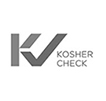What Is Coffee Acidity?
Whenever you drink a cup of coffee, you might notice a unique crisp, tart, or sweet flavor. This taste relates directly to the acids present in the coffee, as your tongue can identify different tangs based on the level of acidity in a liquid. It’s important to understand how acidity affects coffee because people crave specific tastes.
As green coffee beans undergo the roasting process, the acid elements change, which results in the end product having a distinct flavor. At Joe’s Garage Coffee, we have professional roasters with an in-depth understanding of this process, so we can supply your business with the perfect roast to achieve the taste profile your customers want.
Is Acidity in Coffee a Good Thing?
Acid produces specific impressions that can be similar to fruits like citrus or berries. Without this crucial aspect, your coffee will come out tasting flat and dull. Sparking a tasty connection with your consumers is vital if you want to be successful with your brand of coffee.
The fact that coffee is acidic is part of what makes it so good, but crafting the perfect cup takes experience in using the beans’ acid content to your advantage. The Joe’s Garage Coffee team can provide insight on how to select the perfect combination of beans to achieve the taste you’re looking for.
Contact the private label coffee experts today
4 Common Acids in Coffee
During the roasting process, acids can either degrade or increase with high temperatures, which changes the overall flavor of each bean. While several acids can be present in coffee beans, four more common examples include:
- Citric: Found in arabica beans at higher grounds, this acid is also present in some citrus fruits. Lemon, grapefruit, and orange tastes are associated with this type.
- Phosphoric: This acid is sweeter compared to others. It balances out strong sour notes in specific ingredients.
- Malic: Apples and pears also contain this variety, which lends similar flavors to roasted coffee beans.
- Chlorogenic: Chlorogenic acid (CGA) degrades faster while roasting at higher temperatures, which is why lighter roasts work best for bringing out its flavor.
If you need some assistance on how you would like your coffee to taste, we have you covered. Joe’s Garage Coffee sources and roasts beans according to your specifications to achieve the desired acidity characteristics.
How to Reduce the Acidity in Coffee
Achieving the best possible taste requires a balanced acidity, which sometimes means bringing the overall level down. There are a few tried and tested ways to reduce the acidity in your coffee, such as:
- Cold brews: When you use cold water, the acid becomes neutralized in the brewing process.
- Low-acid beans: Use beans that were given a specific treatment in the growing process to naturally develop fewer acids.
- Additives: Adding other liquids like milk and cream stabilizes the acid levels in your coffee.
Having low-acid options available as well as making tailored recommendations to help customers brew the perfect cup can help make your brand more customer inclusive.
Joe’s Garage Coffee Offers Sampling & Tasting Panels for the Perfect Blend
At Joe’s Garage Coffee, we are here to help you create the ideal coffee product for your business. If you describe the flavors you hope to capture, we put our tasting panel and sampling process to work for achieving your goals.
Reach out today and fill out our contact form to get started on crafting a perfectly balanced coffee for your brand.







